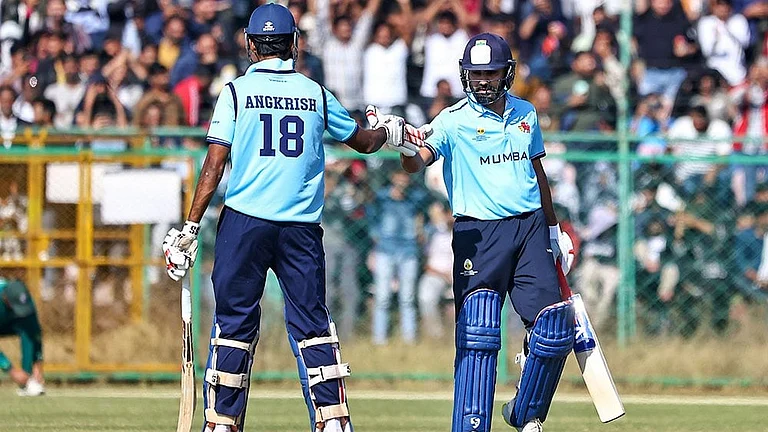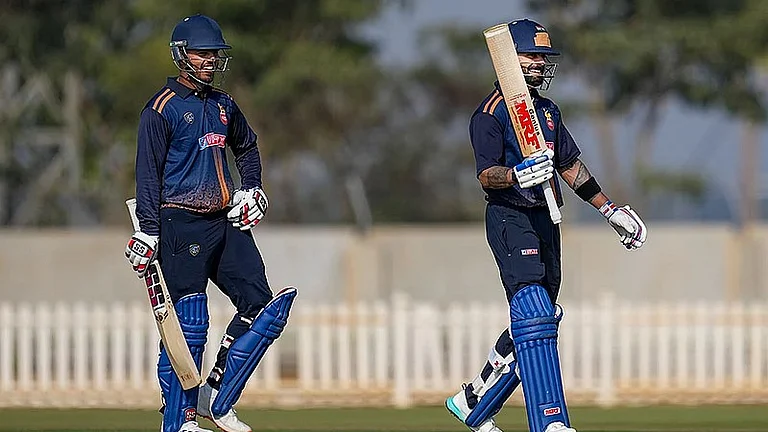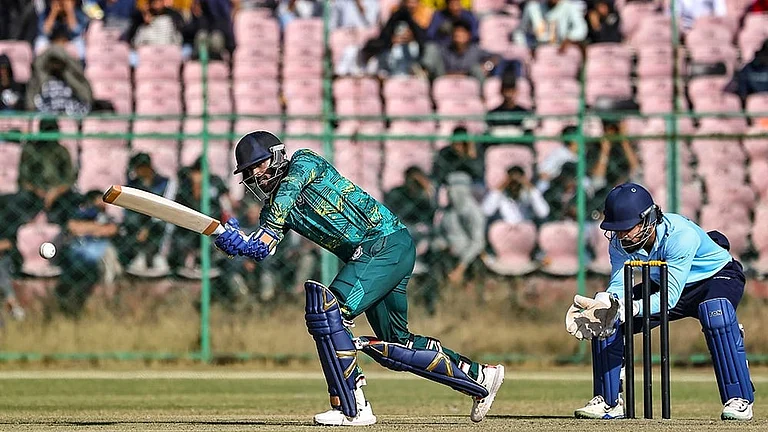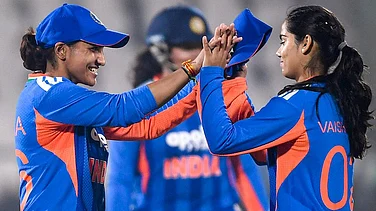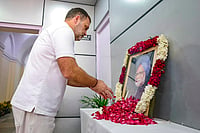Women in Indian sports are making huge strides, from lifting the inaugural under-19 T-20 World Cup to achieving the highest bids for the women’s cricket league.
The last 20 years have witnessed several achievements by Indian sportswomen. This has also led to the creation of a whole generation of women journalists and sports presenters. However, the world of sports in India largely continues to suffer from inequity on the field and continues to reckon with it off the field as well.
A simple search on the internet will show articles on the “most glamorous”, “beautiful”, and “attractive” female presenters. In this respect, the question of who authors a news story and how they are perceived becomes important.
Women in sports journalism say even as they break barriers, they continue to face exclusion simply for being women. Their credibility, talent, and intelligence is questioned, and they are often relegated to be on-air eye candies. The rising economic value of sports and efforts to make sports attractive for viewing have led to female athletes and sports presenters being objectified.
Susan K Cahn in her extensive work Coming on Strong suggested that women’s entry into the sporting fraternity was considered as a threat to masculinity. The presence of sports journalists not just in India but worldwide continues to remain a distinct minority.
Identity and invisiblisation
NDTV’s Sports Editor Rica Roy speaks about the skewed ratio of representation of women voices covering sport.
She says, “When I started out 21 years ago, it was only three or four women covering sports. Now the number has increased. I see at least 10. However, when it comes to the coverage of sports, there is still no parity. There are a couple of reasons for it. I have met women who have wanted to cover sports very passionately. However, they have felt disillusioned by the way in which female sports journalists are treated in the newsroom. Often, they are asked ‘what do you know about sports’. These tactics have put people down.”
Sharda Ugra, the Senior Editor at ESPN and Cricinfo, is a leading voice in sports journalism in India. She started her career in 1987 — the same as Sachin Tendulkar. She says the current ecosystem of sports journalism is very different from what it used to be 20 years ago.
Ugra says, “Speaking of numbers today, there are about 60 women covering and presenting sports, most of them on television. Another facet here is that the women are working primarily in the English language.”
Female sports journalists are a rarity in all countries of the world. According to a study by Nieland and Horky (2013), which analysed 80 newspapers in 22 countries, only 8 per cent of articles were written by women. This finding has been supported by studies in different countries. Franks and O’Neill (2016) studied the visibility of articles that were exclusively written by women, and thus, female sports journalists remain almost invisible. As international findings confirm that sports journalism is “one of the most masculine journalistic universes”. There exists no comprehensive data studying the invisibility of women covering sports in India.
The transition of women onto the screens hasn’t been easy. Since the beginning of sports broadcasting in the 20th century, women were originally ‘allowed’ to present primarily to entice more male viewers. They were hired not for their knowledge or skill but as ‘eye candies’. Despite all the progress, sports presenters share their stories of having to create a mark for themselves beyond being reduced to “glamour”.
Mayanti Langer, one of India’s foremost cricket commentators, with Star Network says, “I was always pitted against other women in terms of how we looked, how we dressed, and who we were married to. We are not pitting ourselves against each other. It was essentially how we were covered and talked about.”
Remembering one of the instances, Langer shares, “When I joined the industry, headlines such as ‘move over Mandira (Bedi), here is Mayanti’ were written. This was particularly wrong as Mandira Bedi paved the way, taking a lot of flak and opening so many doors for many of us.”
She adds, “It is a visual medium where you are judged on the basis of how you look, so are the men, but it isn't as visceral as the women are judged. It did not matter what event I was fronting. There were articles about what I was wearing and how tall my heels were — not about the fact that I was hosting the India-Pakistan Champions trophy and doing it by myself with legends and holding my own. I was reduced to how I look.”
Langer was also relentlessly trolled online for her outfits, the performance of her husband Stuart Binny, and her statements.
Shift in perspective and presence
The reductionist lens through which female newsreaders and presenters are viewed often revolves around questions of their credibility.
Sharda Ugra says, “As a woman, if you make a mistake, you are known forever. Male counterparts do not experience the same challenges as female journalists do. I was often confronted with the question if I knew something technical. It was almost as if one is not supposed to be a journalist. I had to stop paying attention to it to be able to do my job.”
Available data shows that women’s sports receive about 4 per cent of total sports media coverage. The question of who authors a news story has potential implications for the news content. Armstrong (2004), for instance, found that a female author is a significant predictor of women appearing in the news story.
For example, a review in 2013 highlighted that while talking and writing about female athletes, commentators tend to focus more on their emotions. They tend to downplay their physical prowess on the field and sexualise their bodies off the field.
Footballer-turned-commentator Aditi Chauhan says, “I don't think we have enough journalists in sports. I still feel that there needs to be more perspectives. It's very important to have women who understand the struggle of women athletes. To create a space, to have your own voice is extra challenging; it takes extra courage and extra energy.”
Despite having come a long way, Chauhan says she still finds herself being treated differently when it comes to her male counterparts.
She says, “In my own way, I have to fight a battle to state that I will wear and dress according to my own ways, the fact that one has to establish that I am an expert on sports, and not someone presenting there to add glamour. I was an expert, so I had this capacity, but so many presenters do not have this option since there is a constant sense of feeling that one can be replaced. It is very important to show that women can be experts, that we can be technical and manage logistics. We need the voices of women in commentary.”








